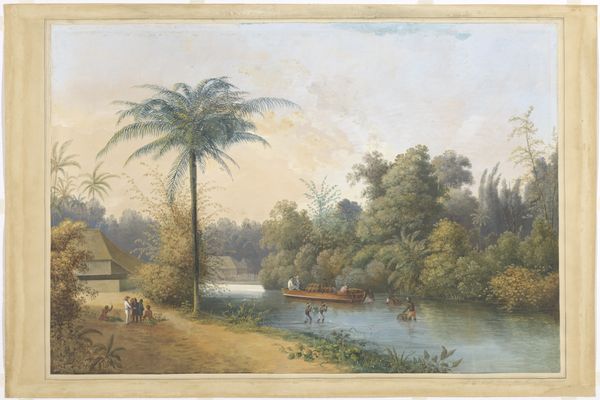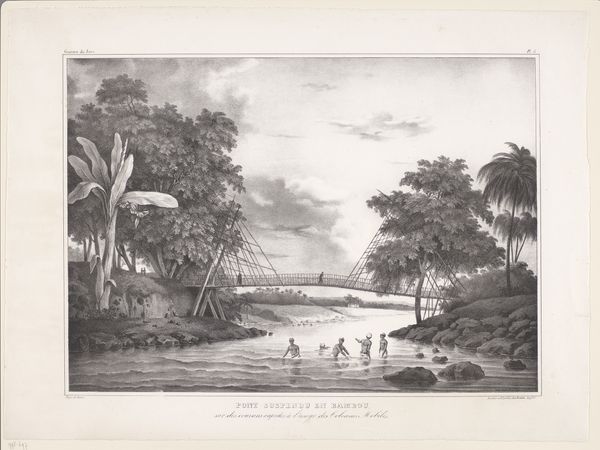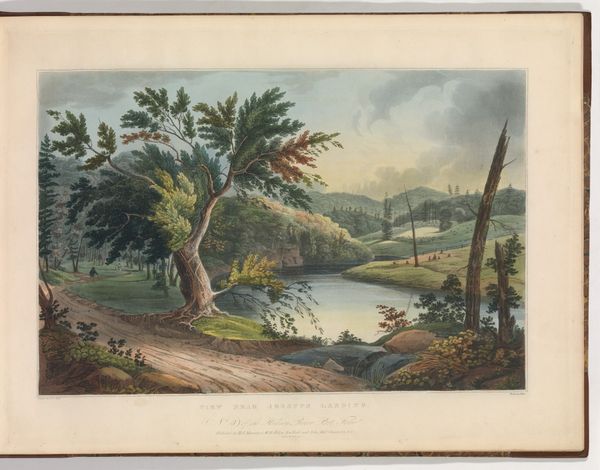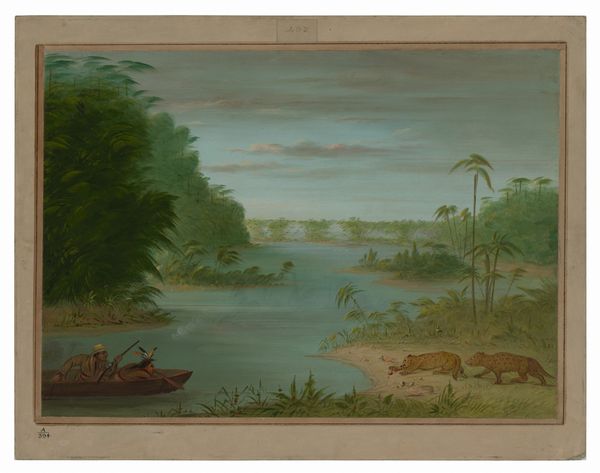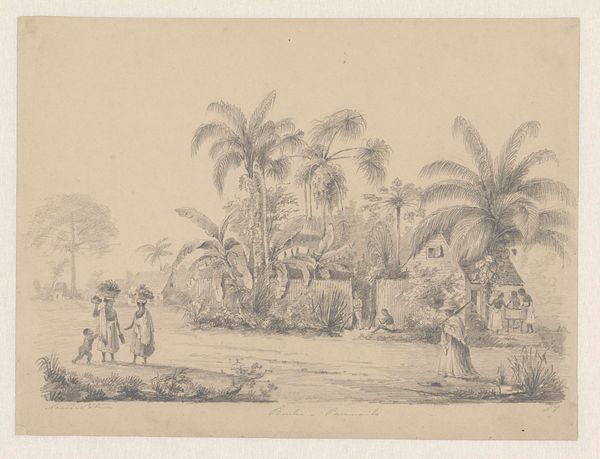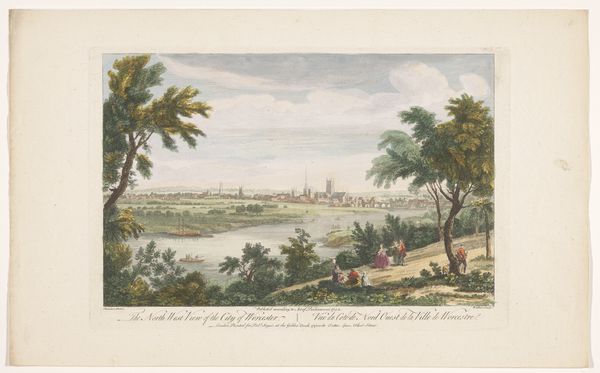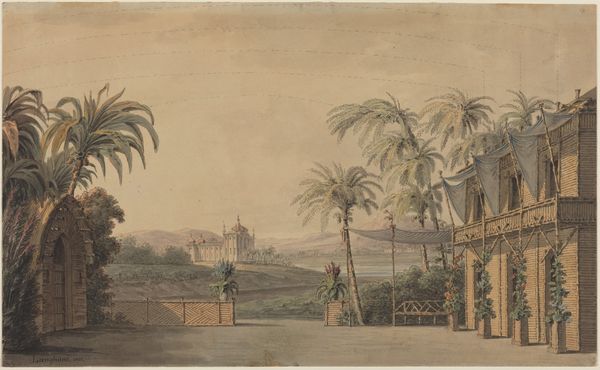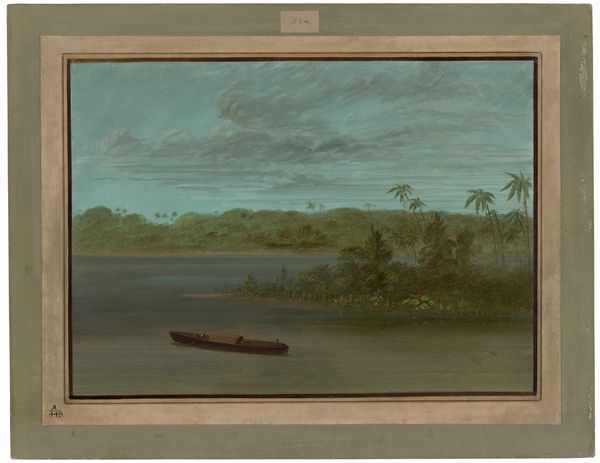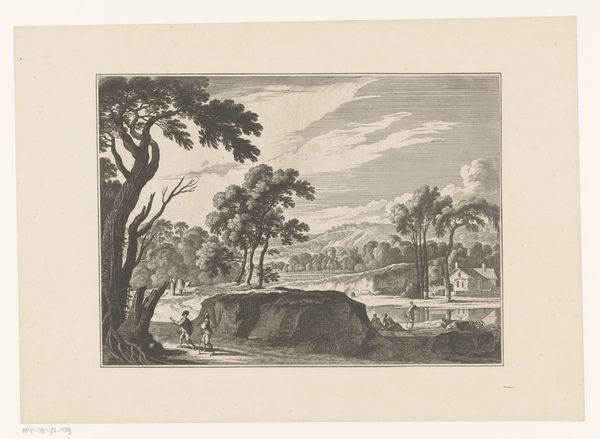
painting, watercolor
#
water colours
#
painting
#
landscape
#
watercolor
#
orientalism
#
realism
Dimensions: height 490 mm, width 715 mm, height 760 mm, width 980 mm
Copyright: Rijks Museum: Open Domain
Editor: This delicate watercolor, “Gezicht te Anjer Java” by Charles William Meredith van de Velde, dating roughly from 1838 to 1898, is so tranquil. The soft washes of color create such a calm atmosphere, yet the figures along the shore suggest a story is unfolding. What do you see in this piece? Curator: Well, first I notice the distinct labor division depicted. We see, in the foreground, presumably European figures leisurely observing while a group of what appear to be local individuals are engaged in the hard work of hauling something from the sea. The material reality here screams colonial exploitation. Editor: That’s a strong interpretation. I was focusing on the landscape, the hazy rendering of the trees, and how the clouds seem to mirror the form of the shoreline. Curator: And those natural elements are certainly there, crafted with skill! But the materialist perspective compels us to consider who is profiting from this scene, whose labor is creating the wealth represented by this peaceful image? The materials themselves—watercolor, paper—speak to a European artistic tradition brought to bear on a colonial landscape. What were Van de Velde’s materials sourced? What impact did his presence have on the local economies? These questions re-orient the discussion from aesthetic pleasure to a discussion of exploitation and production. Editor: So you're saying it's not just a pretty picture, it's evidence of a specific social and economic system at work. Curator: Exactly! This watercolor is not merely a landscape; it's a document, consciously or not, of power relations inscribed on the land and bodies within it. Considering this, I’d wager his choice to use watercolors might be read as a way to sanitize this type of depiction; this light rendering of landscape serves to distance him – and the painting’s European audience - from the often violent realities of colonialism. Editor: I'll definitely look at landscapes differently from now on! Thank you for the insightful explanation! Curator: My pleasure! Remember, art is not separate from the world; it's made of it.
Comments
No comments
Be the first to comment and join the conversation on the ultimate creative platform.
